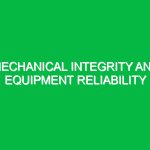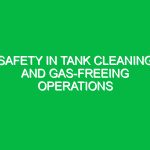In the realm of Health, Safety, and Environment (HSE), the terms “Control of Work” and “Permit to Work Systems” hold significant importance. These systems serve as essential frameworks designed to manage and mitigate risks associated with various work activities, particularly in high-risk environments such as construction sites, oil and gas industries, and manufacturing. By adhering to these protocols, organizations not only comply with legal requirements but also foster a culture of safety that protects employees and assets alike.
Understanding Control of Work and Permit to Work Systems
The Control of Work refers to the overarching process that ensures safety and efficiency in work activities. It encompasses planning, execution, review, and continuous improvement of work practices. Within this framework lies the Permit to Work (PTW) System, a formalized document that authorizes specific tasks to be carried out under controlled conditions. It acts as a communication tool among workers, supervisors, and safety professionals to ensure everyone is aware of the risks involved and the measures in place to manage them.
Consider a scenario in the oil and gas sector where maintenance work is scheduled on a high-pressure pipeline. Before any work begins, a Permit to Work is issued, detailing the specific tasks, hazards, and safety precautions. This document not only outlines the procedure but also ensures that all relevant parties have acknowledged the risks and are prepared to address them. Thus, the PTW system plays a vital role in safeguarding workers and maintaining operational integrity.
Identifying Hazards and Risks in Control of Work and Permit to Work Systems
Every worksite harbors potential hazards that could jeopardize safety if not managed appropriately. The risks associated with Control of Work and Permit to Work Systems can be categorized into several types:
1. Physical Hazards
Physical hazards include machinery, tools, and environmental conditions that can cause injury. For example, working at heights poses risks of falls, while operating heavy machinery may lead to accidents if proper protocols are not followed. In a construction site, a worker might be tasked with installing steel beams. Without a proper PTW in place, overlooking safety harnesses and equipment checks could result in severe injuries.
2. Chemical Hazards
Exposure to hazardous substances is a significant concern, particularly in industries like chemical manufacturing and oil refining. The improper handling of chemicals can lead to spills, leaks, or even explosions. A real-life example involved a chemical plant where a lack of a PTW system led to a toxic gas leak, endangering workers and nearby communities. This incident underscored the necessity of having robust systems in place to manage chemical risks.
3. Biological Hazards
In certain industries, workers may be exposed to biological agents, such as bacteria or viruses. For instance, in healthcare settings, the risk of infection is a constant concern. A PTW system should include guidelines for handling such biological risks, ensuring that workers are equipped with appropriate personal protective equipment (PPE) and training.
4. Ergonomic Hazards
Ergonomic hazards emerge from poor workplace design or repetitive tasks that strain the body. In offices or manufacturing plants, improper lifting techniques or inadequate workstation setup can lead to musculoskeletal disorders. An effective Control of Work system must address these risks through proper training and equipment provision.
Best Practices and Safety Precautions
Implementing effective Control of Work and Permit to Work Systems requires commitment to safety and adherence to best practices. Here are some actionable strategies:
1. Comprehensive Training
Ensure all employees are thoroughly trained on the PTW system and understand its importance. This includes recognizing hazards, understanding the permit process, and knowing their roles in maintaining safety. Regular refresher courses help keep safety top of mind.
2. Clear Communication
Establish open lines of communication among all parties involved in the work process. A well-defined chain of command ensures that everyone knows who to report to and how to escalate concerns regarding safety. When issuing a Permit to Work, ensure that all stakeholders, including supervisors, safety officers, and workers, are involved in discussions about risks and precautions.
3. Detailed Risk Assessments
Before issuing a Permit to Work, conduct thorough risk assessments to identify potential hazards. This should involve evaluating the work environment, the tasks to be performed, and the equipment to be used. For example, if a job involves confined space entry, it’s crucial to assess air quality and ensure proper ventilation and rescue protocols are in place.
4. Regular Audits and Reviews
Implement a system of regular audits to ensure compliance with the Control of Work and Permit to Work Systems. These audits should evaluate the effectiveness of existing procedures and identify areas for improvement. For instance, a construction company might conduct weekly audits during a project to ensure permits are being followed and that safety measures are being adhered to.
5. Emergency Preparedness
Prepare for emergencies by having clear procedures in place. Every PTW should include emergency response protocols tailored to the specific work being performed. This could involve having first aid kits readily available, ensuring workers know evacuation routes, and conducting regular drills.
Regulations and Standards Governing Control of Work and Permit to Work Systems
In many countries, several regulations govern the implementation of Control of Work and Permit to Work Systems. Understanding these regulations is crucial for compliance and safety. Some of the key standards include:
1. Occupational Safety and Health Administration (OSHA) Standards
In the United States, OSHA sets forth regulations that mandate employers to provide a safe working environment. This includes the use of Permit to Work Systems in high-risk situations to ensure safety protocols are followed.
2. International Organization for Standardization (ISO) Standards
ISO standards, such as ISO 45001, provide frameworks for managing occupational health and safety risks. Organizations are encouraged to adopt these standards to enhance their Control of Work processes.
3. Local Regulations
Many countries have specific local regulations that govern the use of Permit to Work Systems. For instance, the UK Health and Safety Executive (HSE) outlines guidelines that organizations must follow to ensure compliance with safety regulations.
Conclusion: The Path Forward
Control of Work and Permit to Work Systems are indispensable components of any effective HSE strategy. By recognizing potential hazards, implementing best practices, and complying with regulatory standards, organizations can create a safer work environment that not only protects employees but also enhances operational efficiency. As industries continue to evolve, staying ahead of safety practices through continuous training and adaptation will be pivotal to success.
In my experience working in various sectors, I have witnessed firsthand the transformative impact that a rigorous Control of Work framework can have. It’s not just about compliance; it’s about cultivating a genuine safety culture where every worker feels empowered to speak up and prioritize safety. The journey towards a safer workplace is ongoing, and every step taken towards improving Control of Work and Permit to Work Systems is a step towards a brighter, safer future.


